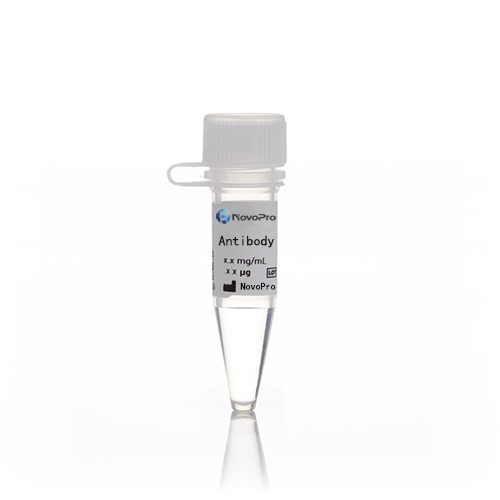- 抗体类型:单克隆
- 抗体来源:兔
- 抗体应用:ELISA, WB, IP
- 特异性:Mouse Cathepsin D / CTSD
产品详情
-
产品名称
Anti-Cathepsin D/CTSD antibody
-
抗体类型
单克隆
-
抗体来源
兔
-
抗体亚型
兔IgG
-
抗体描述
Rabbit monoclonal to Cathepsin D/CTSD
-
抗体应用
ELISA, WB, IP
-
应用推荐
WB: 10-20 μg/ml
ELISA: 0.1-0.2 μg/mL
This antibody can be used at 0.1-0.2 μg/mL with the appropriate secondary reagents to detect Mouse CTSD. The detection limit for Mouse CTSD is approximately 0.00975 ng/well.
IP: 4-6 μg/mg of lysate
-
特异性
Mouse Cathepsin D / CTSD
-
蛋白别名
CatD, Cathepsin D, Cathepsin D, CD, CLN10, CPSD, Ctsd, CTSD, MGC2311, CPSD, CLN10, HEL-S-130P, CD, CatD
-
制备方法
This antibody was obtained from a rabbit immunized with purified, recombinant Mouse Cathepsin D / CTSD (rM Cathepsin D / CTSD; NP_034113.1; Met 1-Leu 410).
-
组分
0.2 μm filtered solution in PBS with 5% trehalose
-
储存方法
This antibody can be stored at 2℃-8℃ for one month without detectable loss of activity. Antibody products are stable for twelve months from date of receipt when stored at -20℃ to -80℃. Preservative-Free.
Sodium azide is recommended to avoid contamination (final concentration 0.05%-0.1%). It is toxic to cells and should be disposed of properly. Avoid repeated freeze-thaw cycles. -
背景介绍
Cathepsin D (CTSD), a well known lysosomal aspartyl protease and belongs to the peptidase C1 family, which is a normal and major component of lysosomes, and is found in almost all cells and tissues of mammals. Its mostly described function is intracellular catabolism in lysosomal compartments, other physiological effect include hormone and antigen processing. Cathepsin D has a specificity similar to but narrower than that of pepsin A. Cathepsin D plays an important role in the degradation of proteins, the generation of bioactive proteins, antigen processing, etc. Among different role in cell physiology, a new function of this enzyme is examined. Cathepsin D is an important regulator of apoptotic pathways in cells. It acts at different stage of intrinsic and extrinsic pathway of apoptosis. In addition, CTSD secreted from human prostate carcinoma cells are responsible for the generation of angiostatin, a potent endogenous inhibitor of angiogenesis, suggesting its contribution to the prevention of tumor growth and angiogenesis-dependent growth of metastases.
-
参考文献
- Fusek M, et al. (2005) Dual role of cathepsin D: ligand and protease. Biomed Pap Med Fac Univ Palacky Olomouc Czech Repub. 149(1): 43-50.
- Minarowska A, et al. (2007) Regulatory role of cathepsin D in apoptosis. Folia Histochem Cytobiol. 45(3): 159-63.
- Zaidi N, et al. (2008) Cathepsin D: a cellular roadmap. Biochem Biophys Res Commun. 376(1): 5-9.


